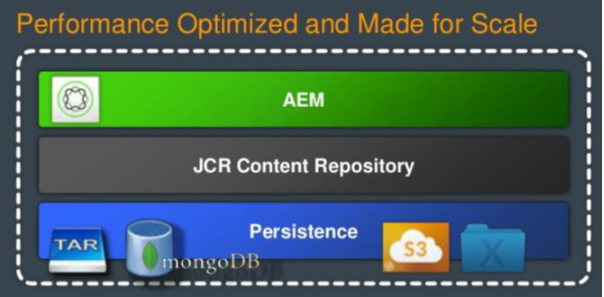Java Content Repository

JCR or Content Repository API for Java, is a specification for Java platform application programming interface to access content repository in uniform manner.
According to the specification, JCR API defines an abstract model and a Java API for data storage and related services commonly used by content-oriented applications.
JCR is a type of object database, they are used to storing session and retrieving hierarchical data, and in this scenario hierarchical structural storage common service of the content repository are versioning, access control, full-text search and event monitoring.
JCR provides generic application data store for structured and unstructured content combining the best of those.
- File systems provide excellent storage for unstructured, hierarchical content.
- Databases provide excellent storage for structured data due to transactional services and referential integrity functionality.
The JCR provides the best of both data storage architectures, plus observation, versioning, and full text search.
In the context of AEM it uses Apache Jackrabbit Oak JCR implementation and supports various persistence options such as TAR file, MongoDB, relational database, S3 structure.
JAVA CONTENT REPOSITORY – JSR-283 STANDARD

Inside JCR repository content is organised into one or more workspaces, each of which holds a hierarchical structure of node and properties. Beginning with a root node at the top here it makes directory structure of file system.
- Each node can have zero or more child nodes and zero or more properties.
- Properties do not have children but do have values.
The main features of JCR repository model are
- Repository consist of one or more workspaces.
- Each workspace consist of hierarchy nodes and properties.
- Node has properties can addressed by path.
- Node can also be directly addressed by unique identifiers.
- Properties stores the actual content of the repository.
- Nodes provide the structural organisation of the content.
- Properties have types and nodes also have types.
- Node type governs which properties in sub nodes it may or must have.
- Node types can be used to enforce constraint on content structure but JCR supports pre-formed unstructured content.

10 comments on AEM Technology Stack
Latha Manivannan Says
21/06/2020
Nice article!! Looking forward for adv topics👍
Megha Says
21/06/2020
Great knowledge sharing about AEM Architecture. Looking forward for more.
Prabhu K Says
21/06/2020
Great Article santosh. Looking forward for more articles.
Prasanna Says
21/06/2020
This is really good and in-depth guide of the architecture
Harshad Patwa Says
22/06/2020
Great Article. Looking forward for more articles.
Medhavi Kulshrestha Says
22/06/2020
Amazing Content. Really helpful for beginner as well as Intermediate in AEM .
Prasanth Kakarla Says
23/06/2020
Great explanation about AEM architecture and all the basics related to AEM.
Looking forward for more!!
Irfan Alam Says
24/06/2020
Good explanation of the AEM architecture… Quite informative.
Vinod Kumar Venkiteela Says
11/07/2020
Nicely done Santosh.. Good luck..!!
vamsi kokku Says
12/07/2020
wonderful blogged. All the best